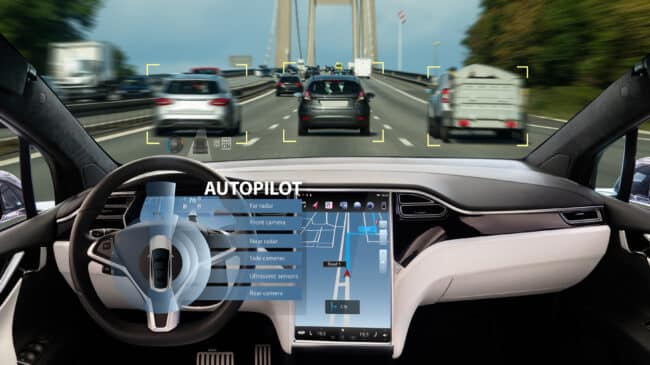Submitted to the National Highway Traffic Safety Administration
In the Matter of Docket No. NHTSA-2020-0106
Framework for Automated Driving System Safety
85 Fed. Reg. 78,058
Introduction
On behalf of Reason Foundation, I respectfully submit these comments in response to the National Highway Traffic Safety Administration’s (“NHTSA”) Advance Notice of Proposed Rulemaking on Framework for Automated Driving System (“ADS”) Safety (“ANPRM”) [1].
Reason Foundation is a national 501(c)(3) public policy research and education organization with expertise across a range of policy areas, including transportation [2]. On the subject of ADS, Reason Foundation recently published white papers on state-level ADS policy and federal-level ADS policy [3]. This comment letter responds to two of the questions posed in the ANPRM, where responses below are numbered to correspond to the ANPRM’s numbered questions.
Responses to Select ANPRM Questions
Question 9. If NHTSA were to develop standards before an ADS-equipped vehicle or an ADS that the Agency could test is widely available, how could NHTSA validate the appropriateness of its standards? How would such a standard impact future ADS development and design? How would such standards be consistent with NHTSA’s legal obligations?[4]
We caution NHTSA against attempting to develop government-unique technical standards and incorporating those government-unique standards into Federal Motor Vehicle Safety Standards (“FMVSS”). This has been NHTSA’s longstanding practice, as well as the federal-wide policy for the use of voluntary consensus standards by regulatory agencies under the National Technology Transfer and Advancement Act [5]. In the ANPRM, NHTSA highlights several existing process measure standards that may prove useful in advancing ADS policy [6]. However, we believe none of those mentioned—ISO 26262, ISO 21448, UL 4600—are sufficient to advance ADS-specific FMVSS.
We support a general approach where safety measurements, safety processes, and safety thresholds as outlined in a recent RAND Corporation report may be considered as part of a future regulation-based ADS safety framework [7]. We recognize that many of these tools are novel, and are likely to take time to develop and eventually be incorporated into future FMVSS rulemaking projects. We also appreciate and wish to emphasize NHTSA’s recognition that “[e]stablishing FMVSS prior to technology readiness hampers safety-improving innovation by diverting developmental resources toward meeting a specific standard.”[8]
Question 17. Which mechanisms could be implemented in the near term or are the easiest and quickest to implement, and why? [9]
An emphasis on voluntary approaches and safety data disclosure is more realistic in the near term. However, we see potential for the FMVSS exemption process to be used as an information-collection tool to inform future ADS-specific rulemakings.
The 2018 streamlining of the FMVSS exemption process—which aimed to expedite the publishing of notices soliciting public comments on exemption petitions by eliminating the requirement that NHTSA determines an exemption petition is complete prior to soliciting comments [10]—should be allowed to bear fruit.
Under the Safety Act and implementing regulations at 49 C.F.R. Part 555, petitioners for exemption must state a basis for the application and provide evidence that granting an exemption is in the public interest and, in most cases, sufficiently demonstrate their exempt non-compliant vehicle or component would achieve an equivalent level of safety or better compared to compliant vehicles or components.
Given the novelty of ADS, information collected from petitioners during this process is likely to depart from NHTSA’s traditional historical safety measurement approach. As we noted in response to Question 9, alternative safety measurements, processes, and thresholds will likely be needed to inform future ADS-specific FMVSS.
The information collected from petitioners for exemption can thus be used to develop new evaluation tools and speed the development of ADS-specific FMVSS, test procedures, and enforcement practices. As such, we believe NHTSA should consider the FMVSS exemption process as essential to its efforts to develop an ADS safety framework in the near term and ADS-specific FMVSS in the longer term.
Conclusion
Thank you for the opportunity to provide feedback on the ANPRM and we look forward to further participation.
Footnotes
[1]. Framework for Automated Driving System Safety, Advance Notice of Proposed Rulemaking, NHTSA-2020-0106, 85 Fed. Reg. 78,058 (Dec. 3, 2020) [hereinafter ANPRM].
[2]. See About Reason Foundation, https://reason.org/about-reason-foundation/.
[3]. Marc Scribner, 10 Best Practices for State Automated Vehicle Policy (Reason Foundation, 2020), available at https://reason.org/policy-brief/10-best-practices-for-state-automated-vehicle-policy/. Marc Scribner, Challenges and Opportunities for Federal Automated Vehicle Policy (Reason Foundation, 2021), available at https://reason.org/policy-brief/challenges-and-opportunities-for-federal-automated-vehicle-policy/.
[4]. ANPRM, supra note 1, at 78,074.
[5]. National Technology Transfer and Advancement Act of 1995, Pub. L. No. 104–113, 110 Stat. 775 (Mar. 7, 1996), codified at 15 U.S.C. § 3701 et seq.
[6]. ANPRM, supra note 1, at 78,065–78,066.
[7]. Marjory S. Blumenthal et al., Safe Enough: Approaches to Assessing Acceptable Safety for Automated Vehicles (RAND Corporation, 2020), available at https://www.rand.org/pubs/research_reports/RRA569-1.html.
[8]. ANPRM, supra note 1, at 78,070.
[9]. Id. at 78,074.
[10]. Temporary Exemption From Motor Vehicle Safety and Bumper Standards, Final Rule, NHTSA-2018-0103, 83 Fed. Reg. 66,158 (Dec. 26, 2018)

